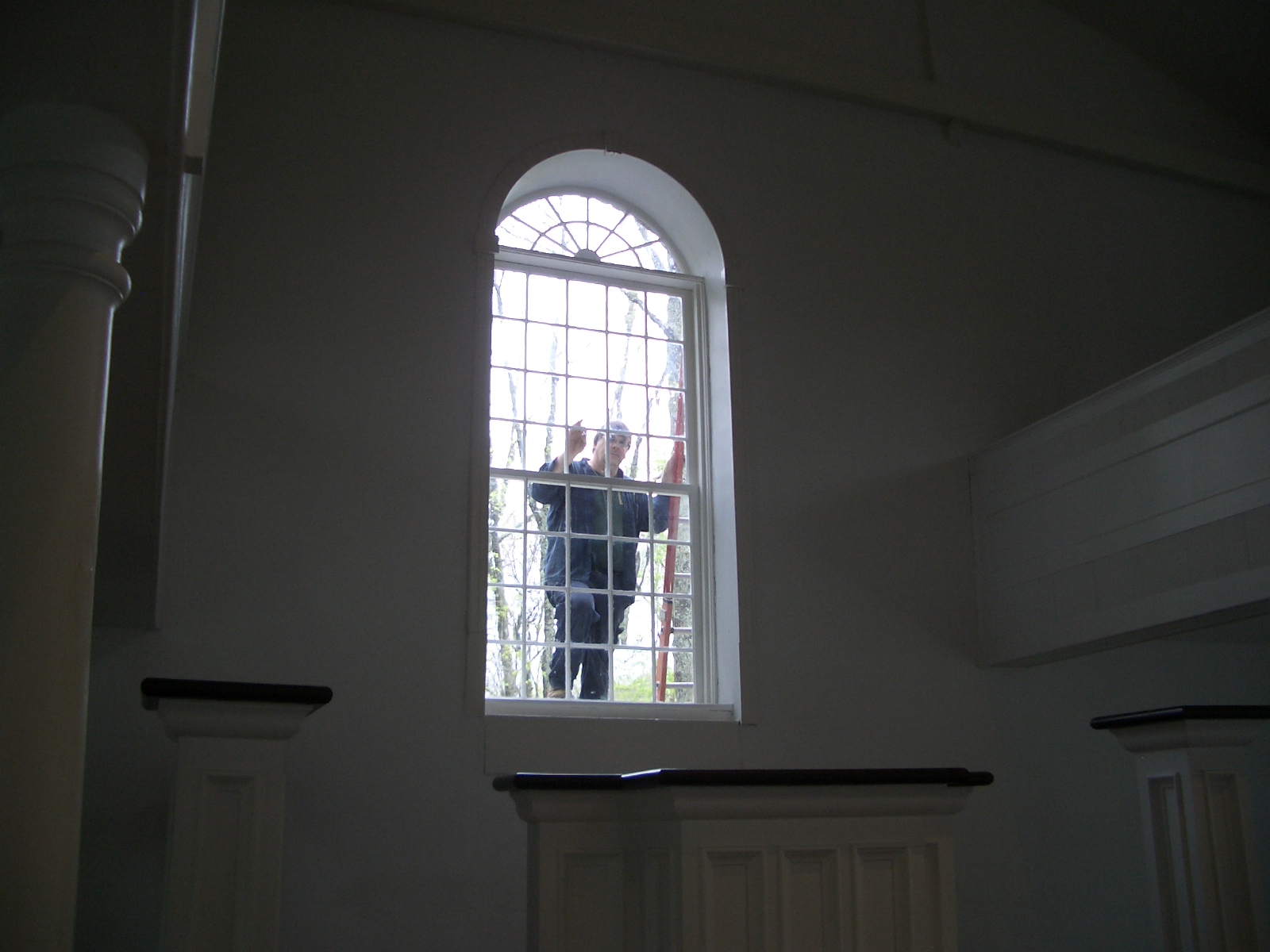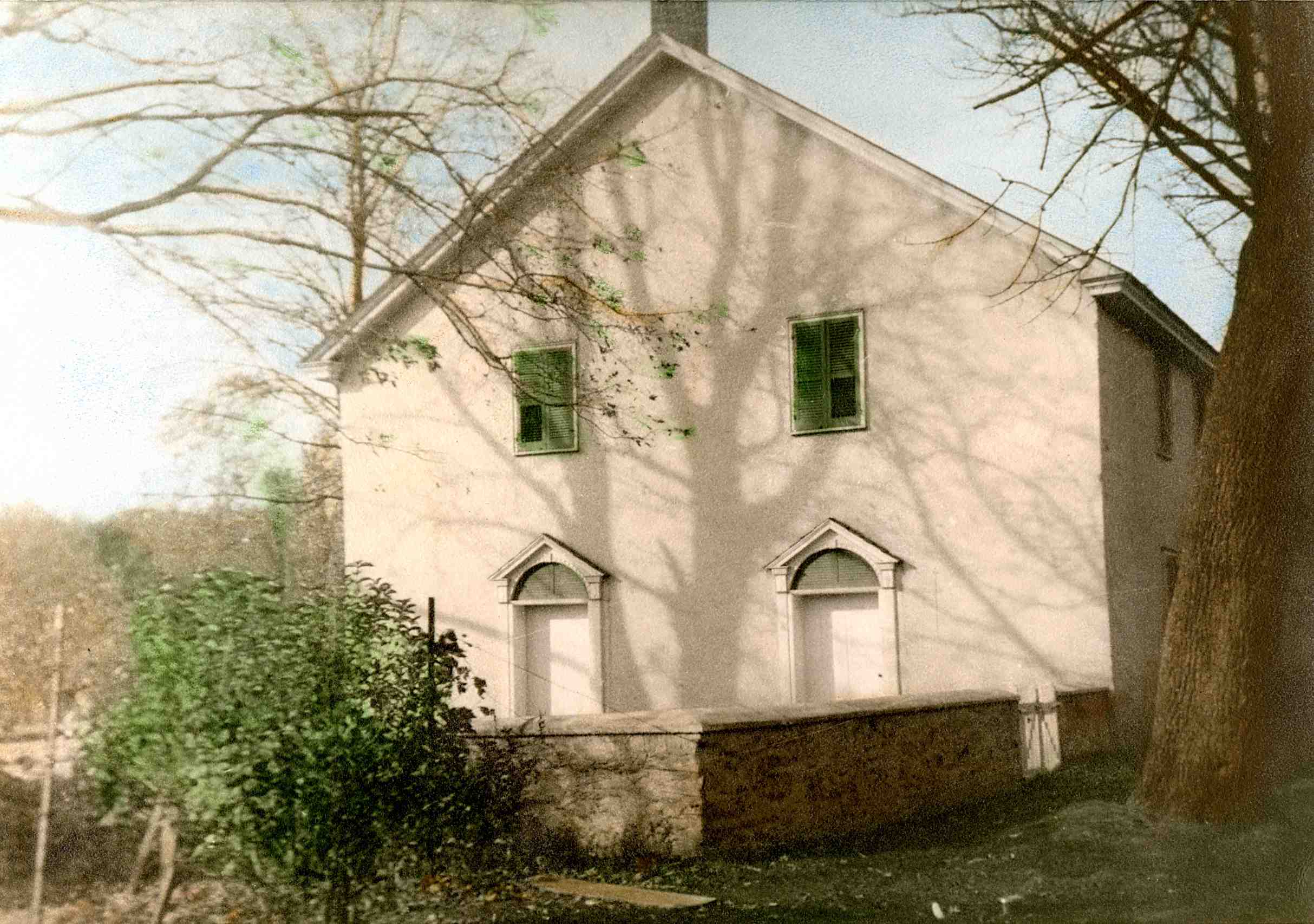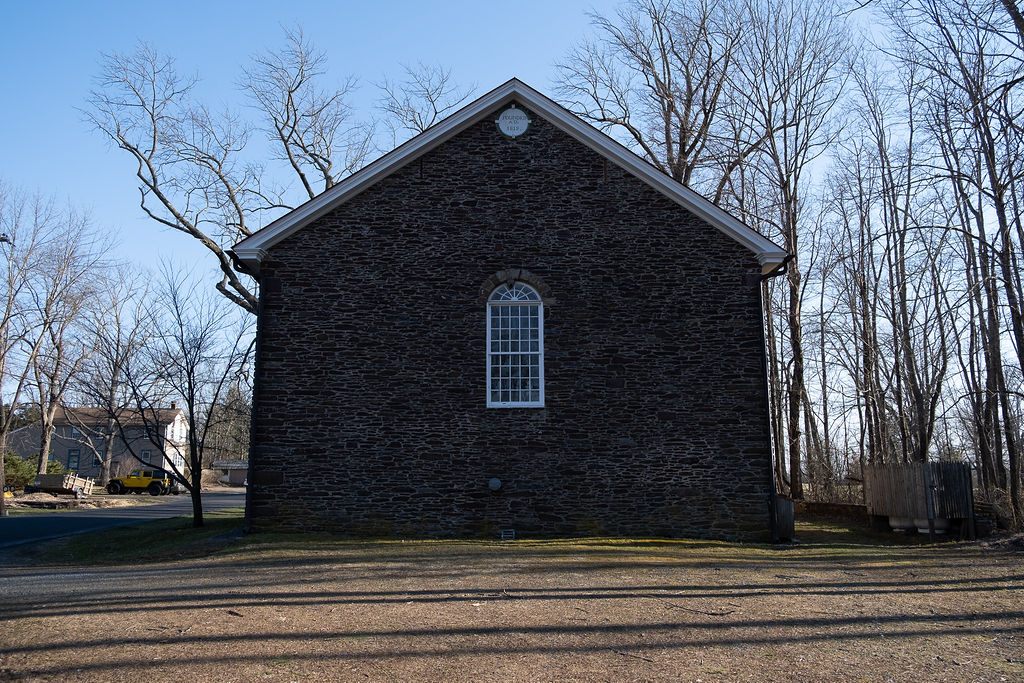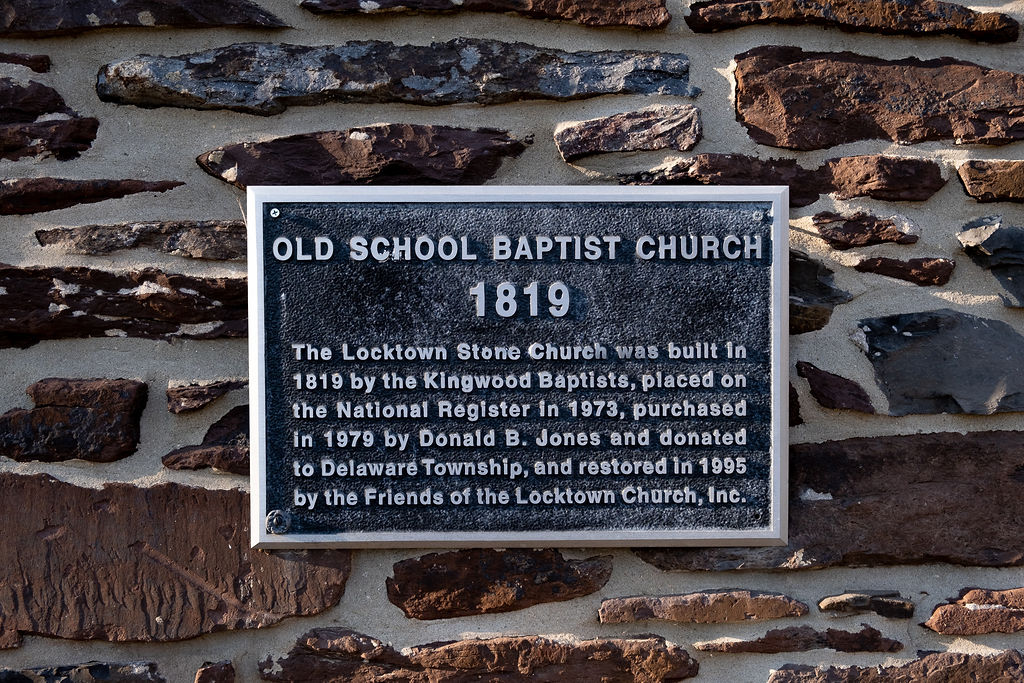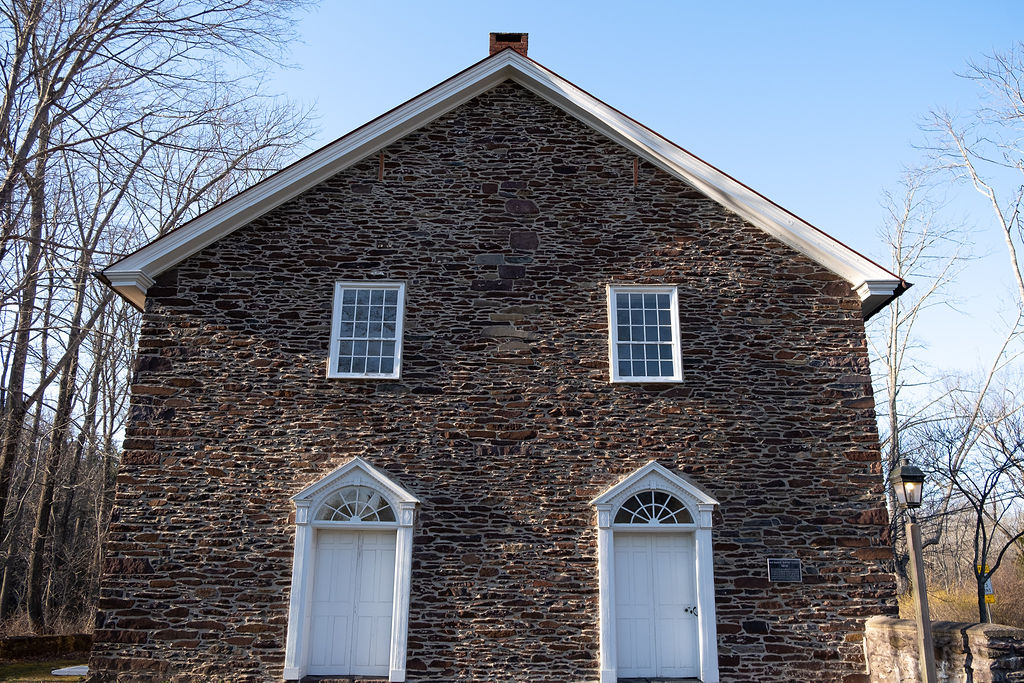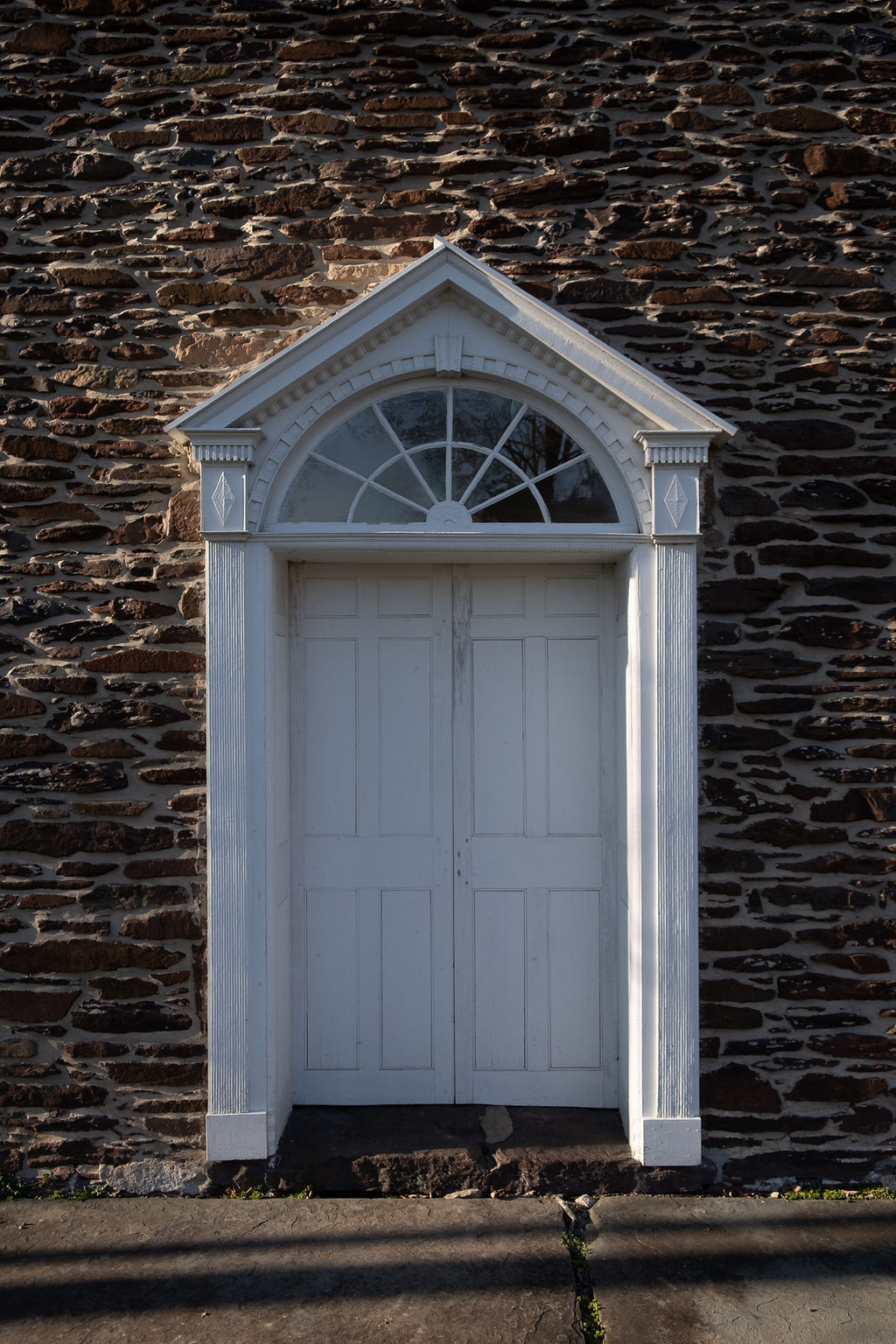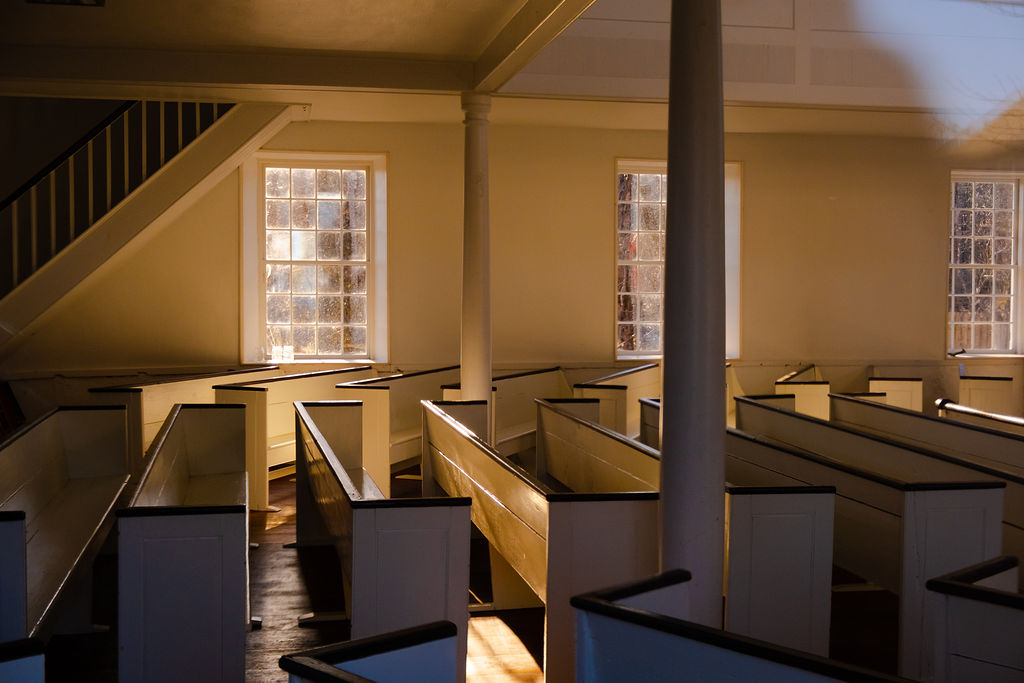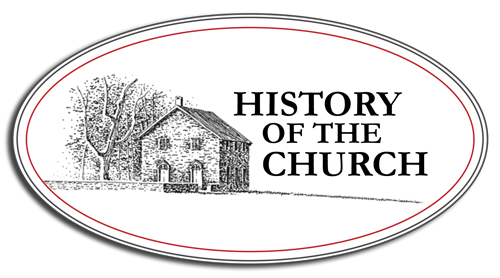

By Marfy Goodspeed & Mildred Wehr

HISTORY OF THE LOCKTOWN STONE CHURCH
Tribute to Endna Horn
Click to view a historical compilation of the Church History (PDF)
In 1742, the Bethlehem Baptist Church was constituted in what is today Kingwood Township, in a village that took on the name Baptistown. The church came to be known as the Kingwood Baptist Church. It was not long afterwards that members of the church began to hold meetings at a location about three miles southwest of Baptistown, along the Wickecheoke Creek. The church in that location was referred to as “The Lower Church” or the “Swamp Meeting House.” This church was located near to the present Locktown Stone Church. The minister of the Kingwood Baptist Church would alternate the location for his Sunday service between Baptistown and the Lower Church.
Construction of the Stone Church
According to the minutes of the Baptist Church, on January 1, 1814, the congregation met at the home of Amos Bonham to determine the location for a new church building near Johnson’s Tavern on Rte 519. Apparently a church was never built there. Then, on January 1, 1819, the congregation resolved “to build a new Baptist meeting-house in the lower part of the congregation or near Mr. William Dilses.” The site was determined on January 27th; the minutes read:
“Mr. Daniel Rittenhouse offers to the church and congregation one half acre of ground adjoining the schoolhouse to build a meeting house on and for the conveniences appertaining to; also to give ground for the enlargement of the graveyard to a hollow from the road to the creek.”
The property was conveyed by deed on May 29, 1819 to the following trustees of the Kingwood Baptist Church: Thomas Lequear, Thomas Shearman, Adam Williamson, Uriah Sutton and George Opdycke.
Elisha Rittenhouse, a cousin of Daniel Rittenhouse, was appointed to superintend the construction of a building 32 feet by 45 feet. Construction moved quickly because by October 16th it was finished and the first services were held in the new building. The preacher was Rev. David Bateman, a man of considerable leadership qualities who was beloved by his congregation and was able to hold it together, even as differences in doctrine were growing.
The Schism That Named A Village
During the early 1800s, a conservative outlook, opposed to missions and progressive teachings, developed among many Baptist congregations. They felt these were man-made and therefore not appropriate. These conservative Baptist beliefs were called “The Old School.” Many of the Kingwood Baptist Congregation held strongly to the Old School.
In 1832, Rev. Bateman died and was buried, according to his wishes, under the pulpit in the Swamp Meeting House. He was replaced by Elder James Wigg in 1834 who came to the area from New York. The next year, the Church withdrew from the Philadelphia Baptist Association and formed a new association with like-minded churches, i.e., the First Hopewell Church, the Second Hopewell Church (in Harbourton), the Southhampton Church (in Bucks County) and another church in Camden County.
In the 1830s, there was a great deal of religious fervor throughout the country. This is generally known as “The Second Great Awakening,” which encouraged those who followed the more progressive school of thought. By 1839, the division amongst the Baptist churches in the area became reflected in the Kingwood Baptist congregation. Most of the congregation agreed with the Old School approach, but Elder Wigg preferred the more liberal school of thought. On February 2, Elder Wigg was dismissed as pastor “in consequence of his departure from the doctrines and practices of this church . . .”
But Elder Wigg was not without support. On February 20th he and 45 followers (including Daniel Rittenhouse who had donated the church lot) went to the stone church for Sunday meeting, only to find that the church doors were locked. There is no mention of this in the church minutes, but tradition tells that Wigg or one of his followers proceeded to place another lock on the door to keep the Old Schoolers out. The building directly south of the church belonged to Daniel
Rittenhouse. It was a tavern at this time, and the tavernkeeper was Benjamin Hyde, a relative of Daniel Rittenhouse. Tradition says that Mr. Hyde was so intrigued with the two locks on the church door that he had a sign made for his tavern that featured three locks. Perhaps it was Daniel Rittenhouse who contributed the sign. By the time a post office was set up in the village in 1856, the name Locktown had become standard usage.
The Outcome of the Struggle
Elder Wigg and his followers met in local houses for a time until they were able to build their own church in Baptistown, across the street from the old Baptist church. The Old Schoolers continued to alternate their Sundays between the Upper and Lower Churches. Elder Gabriel Conklin came to preach in 1848 and stayed for 21 years, until 1869.
As the years passed, the membership began to decline. There were only twelve members in 1933, when winter services were discontinued in the stone church. The last baptism was performed there in 1951. In 1967, Howard Johnson, the last trustee, deeded the church and cemetery to the New Jersey Baptist Convention. He wrote in the minutes: “I locked the door, with sorrow, forever.”
This historic landmark stood as a silent reminder of the past until the summer of 1973 when the Flemington Realtor, Kenneth Yeaton had an option to buy the Church from the American Baptist Convention.
Baptist Convention Offers the Church for Sale
The Locktown Old Stone Church first came into community interest in the summer of 1973 when a Flemington Realtor, Kenneth Yeaton held an option to buy the church from the American Baptist Convention and turn it into a residence.
David Poinsett, supervisor of State Historical Sites in Trenton was contacted. Photos of the Church were taken to his office. Petitions were signed by the Grange members and the Baptistown Baptist Church. Through the efforts of this group the building was listed in the State Historical Register, November 26, 1973. A short lime later, February 15, 1974 it was listed in the National Register of Historic Places.
After many late night meetings with Delaware Township and these concerned citizens, the Township blocked the sale by a lot size variance.
Later meetings were held in the Locktown Grange where members discussed plans to restore the old Church, The Grange had for many years maintained the grounds and the old Cemetery along the creek. Work crews were organized to clean the church and to repair the roof. During the 250th Bi-Centennial celebration the Baptistown Baptist Church held “Open House” in Locktown and promoted the sale of Stephen Zdepski’s newly published book “Baptists in Kingwood, New Jersey” which gives a complete history of the church. Baptistown Baptist Church is the sister of Locktown Old School Baptist.
However, history does repeat itself. The American Baptist Convention still held title to the church. This became evident in 1984 when realtor Robert Hughes obtained an option from the Baptist Convention to purchase the church for $35,000 and convert it into a residence. The American Baptists gave him 18 months to comply with their requirements.
The same group of people who in 1974 had saved the church again with many other friends sought ways to preserve this valuable landmark. In July, 1984 the group met with Rev. George Younger, executive minister of the American Baptist Convention to discuss their options. The group included Dr. Edwin Teller from the Flemington Baptist Church; Paul Rabe, Mr. and Mrs. Elmer Walker and Bob and Mary Schenck from the Locktown Grange; Steve and Ruth Zdepski and Mildred Wehr from the Baptist Church of Baptistown was well as Delaware Township residents Floyd, Diana and Denise Evans, Milt and Aletta Smith, and Ed and Sandy Walker. They pledged to initiate a maintenance program under the auspices of the Locktown Grange. Rev. Younger seemed interested in pursuing the matter.
Negotiations with the Baptist Convention Fail
For many evenings they met at the Grange in Locktown to discuss what steps might be taken. They approached the Environmental Commission, who agreed to take title to the Church if something could be arranged with the Baptists. In March 1986, the Township’s attorney, Robert K. Hornby, was authorized to contact the Baptist Convention and express the Township’s interest in acquiring the property. Unfortunately, the Baptists had decided they would grant the option to Mr. Hughes on August 1, 1986, no matter what other offer might be made to them.
The Friends Incorporate
It was in April 1986, that the group of local citizens decided to organize themselves as the “Friends of the Locktown Stone Church,” and incorporate as a non-profit organization. They held a special program at the church in May, with members of the Flemington Baptist Church there to sing, and speeches given describing the state of negotiations. Money was raised to help with preservation of the church. If plans fell through to save the church, this event would give people one last chance to spend some time in this historic building.
In July, the Township Committee heard reports from the Township attorney that the building was eligible for purchase under the Green Acres program. The Township voted on a resolution to seek Green Acres funding for the purchase, and to avoid using tax dollars.
In August, Mr. Hughes exercised his option, took possession of the Church and began percolation tests that seriously disturbed the soil both in front and behind the building. There was much concern that Mr. Hughes planned to have the church “delisted” from the National Register of Historic Places. The Friends protested to the Office of New Jersey Heritage.
Donald Jones Purchases the Church
They also reached out to Donald Jones, who supported efforts to save the church. By February, a deal was struck with Mr. Hughes, who sold the church to Mr. Jones for $92,000, while the Township proceeded with its application to Green Acres, which was approved in October 1987. Unfortunately, the amount approved was only $35,000, the price that Mr. Hughes had paid the Baptists. In February 1988, the Township agreed to proceed with appraisals which would allow it to apply for additional funds. In March 1989, the Township voted to bond for $96,000, allowing it to purchase the church from Donald Jones.
Township Succeeds with Application to Green Acres
The application for a $96,000-loan from Green Acres was approved in the Spring of 1988, which then voided the bond obligation. It was not until December 1989 that the sale was completed. Donald Jones used the proceeds to purchase zero-coupon bonds which he gave to the Township to use for payment of the principle on the Green Acres loan, while the Friends pledged to pay the interest on the loan, thus freeing the Township from using tax dollars for acquisition. On December 29, 1989, Delaware Township signed a 20-year lease with the Friends of the Locktown Stone Church. The Friends obligated themselves to restore the building for public use.
Major Restoration Work Begun
The Friends are proud to note that they have diligently pursued that goal. In 1988 and 1989, the Friends received small grants from the Hunterdon County Cultural and Heritage Commission which went toward the cost of a historic structure report. Then in 1991, the Friends were awarded a grant of $28,000 by the New Jersey Historic Trust to be spent on renovation of the floor and installation of electrical conduit and heating ducts. The entire floor was removed, old rotting joists were replaced, plywood laid on top and the original floorboards restored. Additional grants were awarded by the Trust.
In 1997, the Friends were awarded another grant from the Historic Trust, this time to install a heating system, to replace the roof and to establish parking and sanitary facilities. This grant was supplemented by support from The 1772 Foundation and The Hunterdon County Cultural & Heritage Commission. The heating system was installed in 1998 by Stryker Heating & Cooling, permitting use of the church during the cold months. Next, the Friends turned their attention to the roof. Restoration of an historic building is never a simple process, and the roof presented challenges just as every other part of the building has. The original roof was cedar shakes, which was covered with a tin roof in 1873. The Historic Sites Council determined that restoration should be consistent with the second half of the 19th century, which meant that the new roof would be a replica of the tin roof rather than the wooden shingles. Win Buchanan of Lambertville installed the roof in 1999. He was obliged to recreate the short lengths of tin (24 inches) that were used in the original and to paint it with a color matching the original paint, which was a deep reddish brown. The result was very attractive.
how to find us
GPS Address:
323 Locktown-Sergeantsville Road
Flemington, NJ
For a map and
additional driving
directions

